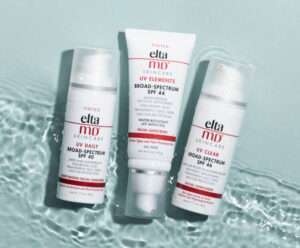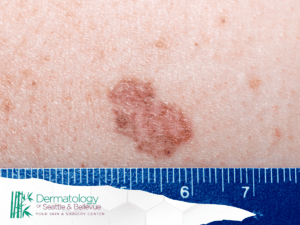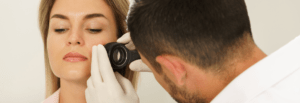As representatives of our dermatology clinic, we prioritize providing personalized care tailored to each patient’s needs. While we offer expert advice on post-Mohs surgery bandage care, it’s important to note that the most accurate and specific information will come directly from our experienced doctors.
Following Mohs surgery, patients typically wear a bandage for 24 to 48 hours, though individual circumstances may vary. This bandage protects the surgical site, provides support, and promotes healing. We advise against getting the bandage wet to prevent infection, and our clinic offers detailed instructions on safe bathing practices.
If the bandage becomes soiled or saturated, we recommend changing it promptly. Additionally, after bandage removal, applying a thin layer of ointment may aid in healing. Our team is dedicated to guiding patients through every step of their recovery journey and encourages open communication for personalized care.
The Advantages of Mohs Surgery: Ensuring No Cancer Cells Remain
Mohs micrographic surgery, often referred to simply as Mohs surgery, stands out as a highly effective treatment for basal cell carcinoma (BCC) and squamous cell carcinoma (SCC), the two most common types of skin cancer. This specialized procedure offers several advantages over traditional skin cancer surgeries, ensuring thorough removal of cancer cells while preserving as much healthy tissue as possible.
- One of the key advantages of Mohs surgery is its unparalleled precision in removing cancerous cells while sparing healthy tissue. Unlike conventional excision techniques, Mohs surgery involves removing tissue in stages, with each layer immediately examined under a microscope. This meticulous process allows the surgeon to precisely map and remove cancer cells layer by layer until no cancerous tissue remains.
- Another significant advantage of Mohs surgery is its high cure rate. Studies have shown that Mohs surgery boasts one of the highest cure rates for both basal cell carcinoma and squamous cell carcinoma, surpassing other treatment methods. By meticulously removing cancerous tissue while sparing healthy skin, Mohs surgery minimizes the risk of cancer recurrence and ensures optimal outcomes for patients.
- Additionally, Mohs surgery offers cosmetic advantages, particularly when treating skin cancers in cosmetically sensitive areas such as the face, hands, feet, and genitals. The precise nature of Mohs surgery allows the surgeon to preserve as much healthy tissue as possible, resulting in smaller scars and better cosmetic outcomes compared to traditional excision techniques.
- Furthermore, Mohs surgery can be performed as an outpatient procedure in a specialized facility, often under local anesthesia. This means patients can typically return home the same day, minimizing disruption to their daily activities and reducing the need for extensive post-operative care.
Overall, Mohs surgery’s advantages, including its precision, high cure rate, cosmetic benefits, and outpatient nature, make it a preferred choice for the treatment of basal cell carcinoma and squamous cell carcinoma.
Post-Mohs Surgery Bandage Care: Guidelines and Tips
Post-Mohs surgery bandage care is essential for optimal healing and recovery. Here are some guidelines and tips to ensure proper care of the surgical site:
- Leave the Initial Bandage Intact: Following Mohs surgery, your dermatologist will apply a sterile dressing or bandage to the surgical site. It’s crucial to leave this initial bandage intact for the specified duration to protect the wound and minimize the risk of infection.
- Avoid Getting the Bandage Wet: Keep the bandage dry and avoid exposing it to water, as moisture can increase the risk of infection. Cover the bandaged area with plastic wrap or a waterproof dressing when bathing or showering to prevent water from seeping through.
- Change the Bandage as Directed: Your dermatologist will provide specific instructions on when and how to change the bandage. If the bandage becomes wet, soiled, or uncomfortable, it may need to be changed sooner. Always wash your hands thoroughly before and after changing the bandage to reduce the risk of contamination.
- Apply Ointment if Advised: In some cases, your dermatologist may recommend applying a thin layer of antibiotic ointment or petroleum jelly to the surgical site after removing the bandage. This helps keep the wound moist and promotes healing. Follow your dermatologist’s instructions regarding ointment application.
- Avoid Scratching or Picking at the Wound: It’s essential to resist the urge to scratch or pick at the surgical site, as this can disrupt the healing process and increase the risk of infection. If you experience itching or discomfort, consult your dermatologist for safe management of these symptoms.
- Protect the Wound from Sun Exposure: The skin may be more susceptible to sun damage after Mohs surgery. To protect the area from harmful UV rays, keep the surgical site covered or apply sunscreen with SPF 30 or higher when going outdoors.
- Attend Follow-Up Appointments: Be sure to attend all scheduled follow-up appointments with your dermatologist to monitor the healing progress and promptly address any concerns or complications. Your dermatologist may recommend additional treatments or interventions based on your individual needs.
Follow these tips to care for your bandage after Mohs surgery. This will help your recovery go smoothly and give you the best results. If you have any questions or concerns about caring for your surgical site, don’t hesitate to reach out to your dermatologist for guidance and support.

Tips for Optimizing Recovery after Mohs Surgery
Recovery after Mohs surgery is crucial for successful outcomes. Here are some tips to optimize your healing process:
- Follow Post-Operative Instructions: Your dermatologist will provide specific instructions on wound care, medication, and activity restrictions. Follow these instructions diligently to promote healing and minimize complications.
- Keep the Surgical Site Clean and Dry: Proper wound care is essential to prevent infection. Keep the surgical site clean and dry, and follow your dermatologist’s recommendations for dressing changes and hygiene practices.
- Apply Ice Packs as Needed: To reduce swelling and discomfort, you can apply ice packs to the surgical site for short periods as directed by your dermatologist. Be sure to use a cloth or barrier between the ice pack and your skin to prevent frostbite.
- Elevate the Surgical Site: Elevating the treated area, especially if it’s on your face, can help reduce swelling and promote circulation. Use pillows or cushions to elevate your head while resting.
- Avoid Strenuous Activities: Refrain from engaging in strenuous activities or heavy lifting during the initial recovery period. Allow your body to rest and heal without placing undue stress on the surgical site.
- Stay Hydrated and Eat Nutritious Foods: Proper hydration and nutrition are essential for optimal healing. Drink plenty of water and eat a balanced diet rich in vitamins, minerals, and protein to support your body’s recovery process.
- Avoid Smoking and Alcohol: Smoking and excessive alcohol consumption can impair healing and increase the risk of complications. If you smoke, consider quitting, and limit alcohol intake during the recovery period.
- Protect the Surgical Site from Sun Exposure: Direct sunlight can damage the delicate skin at the surgical site and increase the risk of scarring. Keep the area covered with clothing or sunscreen with SPF 30 or higher when going outdoors.
- Attend Follow-Up Appointments: Regular follow-up appointments with your dermatologist are essential for monitoring your healing progress and addressing any concerns. Don’t hesitate to reach out if you experience unusual symptoms or complications.
- Be Patient and Give Yourself Time to Heal: Remember that recovery after Mohs surgery takes time, and everyone heals at their own pace. Be patient with yourself, and don’t rush the process. Trust in your dermatologist’s expertise and guidance to guide you through a successful recovery journey.
Conclusion
In conclusion, Mohs surgery stands as a gold standard in the treatment of basal cell carcinoma and squamous cell carcinoma, offering unmatched precision, high cure rates, and superior cosmetic outcomes. Mohs surgery removes cancer while saving healthy skin, ensuring no cancer cells are left.
Patients feel reassured and get the best outcome. If you’re considering skin cancer treatment, consult with Dermatology of Seattle & Bellevue to explore whether Mohs surgery is the right option for you.






